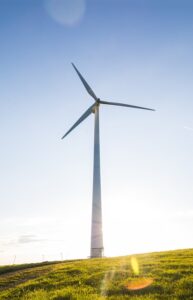 The increased demand for energy due to the growing population has forced the industry to develop new sustainable ways to produce energy. Among new and developing energy technologies are wind turbines. They are widely used to produce energy in many parts of the world. However, there are multiple concerns that are yet to be solved, one of them has been the lack of effective monitoring devices and techniques. Structural health monitoring of wind turbines is needed to ensure that the infrastructure around wind power remains reliable. It is crucial to monitor the operation of wind turbines to ensure effective wind power generation and avoid costly downtimes.
The increased demand for energy due to the growing population has forced the industry to develop new sustainable ways to produce energy. Among new and developing energy technologies are wind turbines. They are widely used to produce energy in many parts of the world. However, there are multiple concerns that are yet to be solved, one of them has been the lack of effective monitoring devices and techniques. Structural health monitoring of wind turbines is needed to ensure that the infrastructure around wind power remains reliable. It is crucial to monitor the operation of wind turbines to ensure effective wind power generation and avoid costly downtimes.
Besides monitoring of wind turbine temperatures, which can be effectively performed with the use of FBG temperature sensors, the monitoring of wind turbine foundations can prevent premature decay of the foundations and prolong the operational time of the turbines. Often the access to the underground part of the foundations is limited, therefore the degradation of onshore, reinforced-concrete wind turbine foundations is assessed via above-ground inspections, or through excavations that suspend energy generation. Sustained measurements of crack behavior could be used to quantify the risk of water ingress and reinforcement corrosion. However, the cracks that occur during turbine operation are not monitored. A solution to this issue is the use of fiber Bragg grating sensors.
Subterranean fiber Bragg grating strain sensors can be used to monitor the opening and lateral displacements of foundation cracks during wind turbine operation. Cracks that occur in the foundation of the turbines are often caused by the vibrations that are produced by turbines themselves. Therefore crack displacement results that are obtained via FBG strain sensors installed on the foundations are correlated with the strains measured by the second series of FBG sensors affixed to the turbine tower and verified against wind speed and turbine data from the operator.
The use of FBG strain sensors can be used to better assess the risks of water ingress and subsequent corrosion of the foundation’s steel reinforcement. The data obtained by fiber Bragg grating sensors may help engineers to more accurately determine the current asset lifetime and the design and construction of foundations in the future.
Fiber Bragg grating strain sensors demonstrate lots of advantages compared to the regular electrical strain gauges. Namely, they are immune to electromagnetic interference and power shortages. Compact size devices provide the most accurate measurements. FBGs are, literally, the best strain sensors right now.
If you would like to purchase Optromix FBG Strain Sensors, please contact us: info@optromix.com or +1 617 558 9858

